Introduction
Navigating the complexities of Autism Spectrum Disorder (ASD) can feel overwhelming, yet understanding its nuances is essential for fostering an environment where individuals can thrive. This multifaceted condition, marked by diverse challenges in communication, social interaction, and behavior, affects each person uniquely, underscoring the importance of early diagnosis and tailored interventions. By exploring the social communication hurdles, behavioral traits, sensory sensitivities, and the underlying genetic and environmental factors associated with ASD, parents and advocates can equip themselves with the knowledge necessary to support their children effectively.
This article delves into these critical aspects, offering insights and resources that empower families to advocate for their children's needs and promote their overall well-being.
Defining Autism Spectrum Disorder: An Overview
Autism Spectrum Disorder (ASD) is a complex neurodevelopmental disorder characterized by a range of challenges in social interaction, communication, and behavior. The term 'spectrum' reflects the wide variance in symptoms and severity, meaning that no two people with this condition are alike. Symptoms typically emerge in early childhood and can continue throughout a person's life. Early diagnosis and intervention are crucial for effective support, enabling those with developmental disorders to reach their full potential.
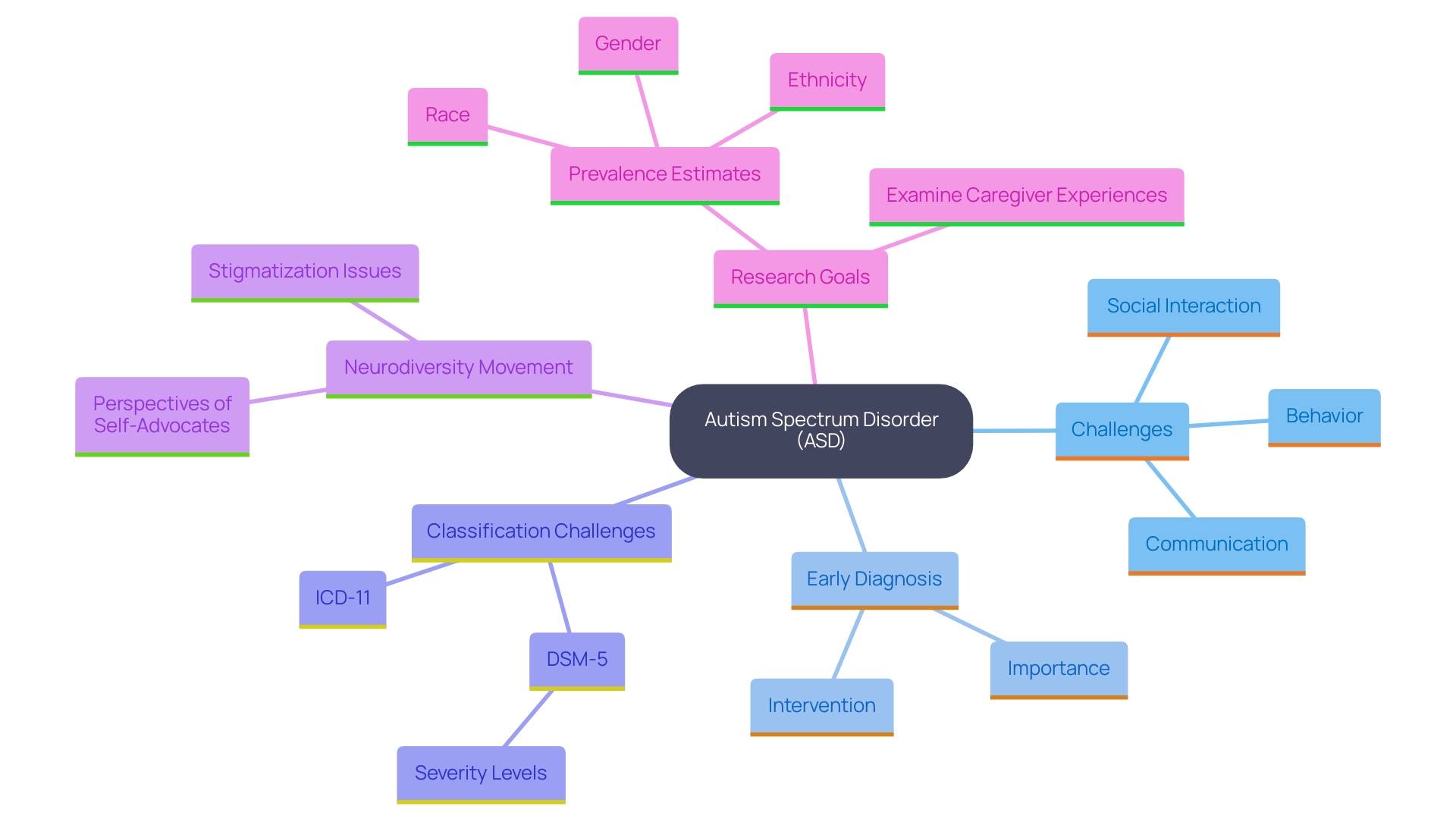
Understanding the Social Communication Challenges of Autism
Individuals with Autism Spectrum Disorder (ASD) often experience significant challenges in social communication, which can manifest in various ways, such as difficulty interpreting social cues and challenges in maintaining conversations. According to the U.S. Department of Education, approximately 464,000 students ages 14–21 served under IDEA exited school, with 74 percent graduating with a regular high school diploma. Notably, the dropout rate for students with autism is lower, at just 7 percent, compared to other disabilities.
This indicates that while individuals with autism may face social communication challenges, they also have strengths that can be nurtured. It is crucial for guardians to recognize these challenges not as deficits but as differences in communication styles. Experts stress that comprehending these distinct social behaviors enables caregivers to create settings that promote social skills development. By creating supportive spaces, parents can help their children navigate social interactions more effectively and build confidence in their social capabilities.
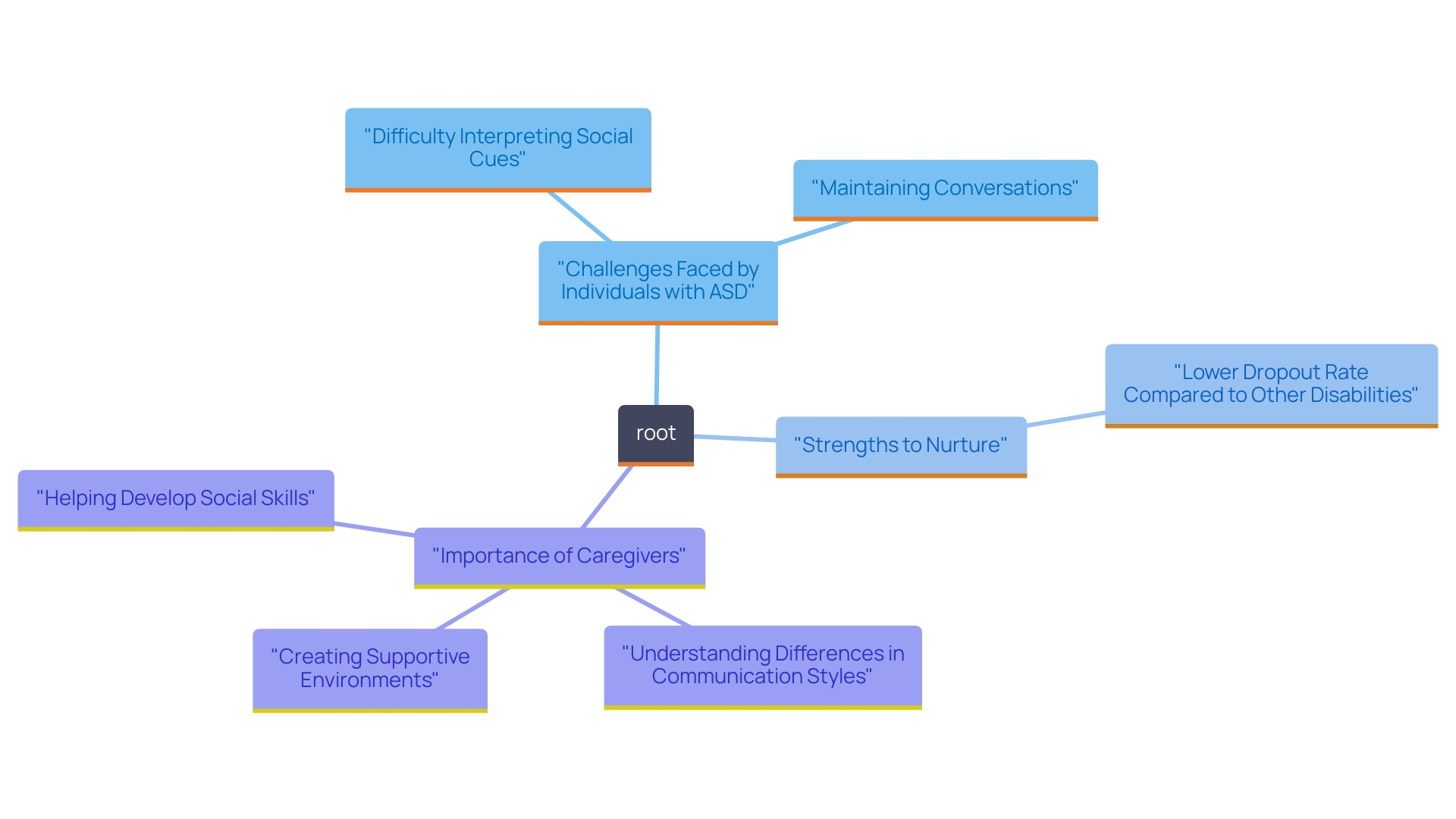
Exploring Behavioral Traits and Sensory Sensitivities in Autism
Behavioral characteristics in people with Autism Spectrum Disorder (ASD) often include repetitive actions, such as hand-flapping or rocking, and adherence to routines that provide comfort and predictability. Sensory sensitivities are also common; people may be over or under-sensitive to sensory stimuli like lights, sounds, or textures. Identifying these characteristics enables caregivers to establish nurturing settings customized to an individual's distinct sensory requirements while encouraging constructive behaviors.
Recent research highlights the role of genetic factors in ASD, with studies indicating that certain genetic mutations may increase the likelihood of developing autism. For instance, a study published in the American Journal of Human Genetics found that specific gene variants were associated with a higher risk of autism symptoms. Additionally, environmental influences, such as prenatal exposure to toxins or maternal infections, have been identified as potential risk factors. Understanding these elements can empower guardians to seek genetic counseling, which is essential for interpreting test results based on individual health history and family background.
A case study from a local family support group illustrates how awareness of these factors helped a family adjust their home environment, reducing sensory overload for their offspring and improving overall well-being. By staying informed about both behavioral traits and the broader context of genetic and environmental influences, parents can more effectively advocate for their offspring and create nurturing spaces that support their development.
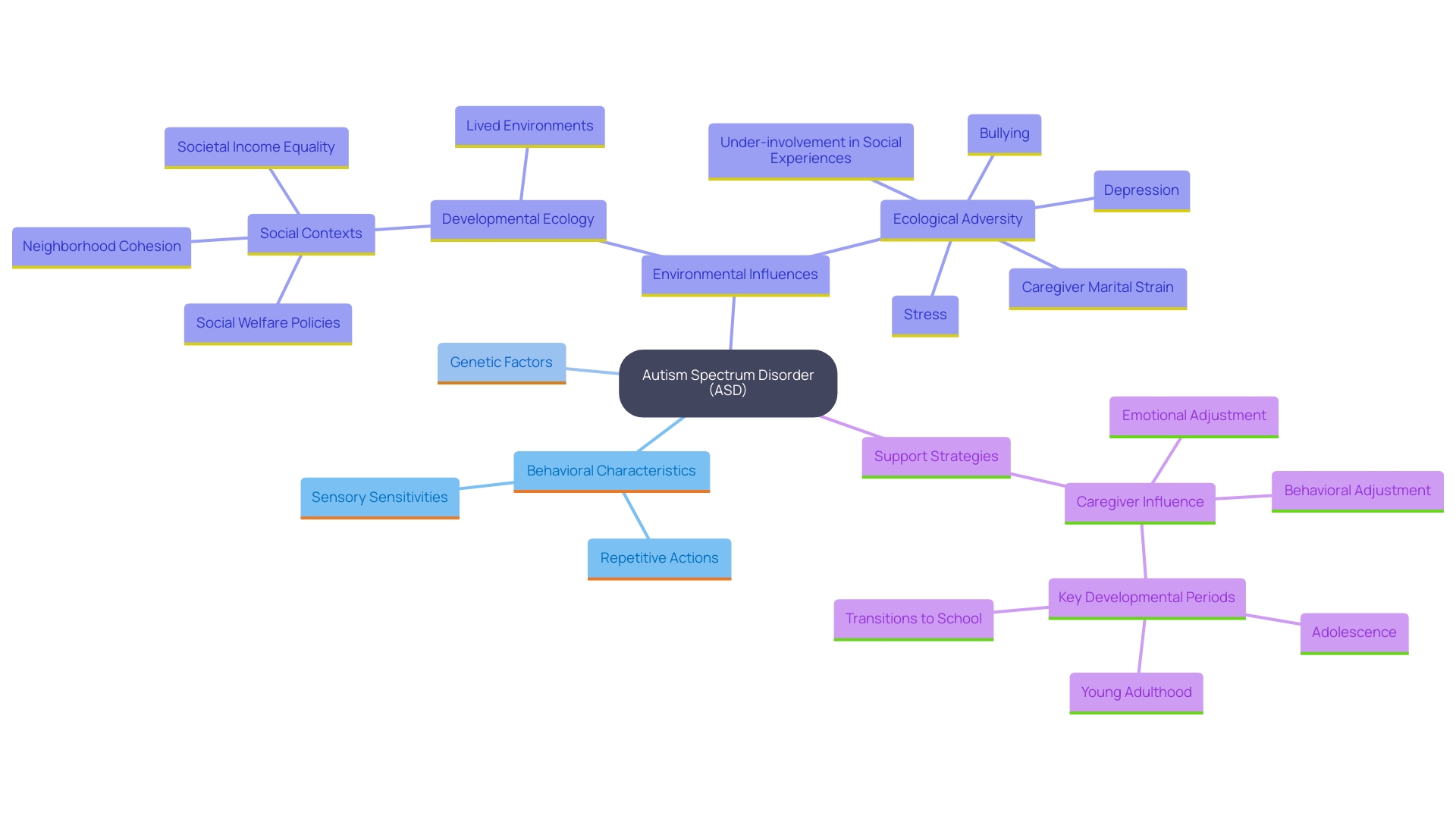
Investigating the Causes and Risk Factors of Autism Spectrum Disorder
Autism Spectrum Disorder (ASD) is a multifaceted condition influenced by a combination of genetic and environmental components. Recent genetic research reveals that an additional 15-20% of the risk for ASD can be attributed to spontaneous mutations or predictable inheritance patterns, highlighting the significant role of genetics. However, this genetic predisposition is only part of the story.
Environmental factors, such as prenatal exposure to toxins, also play a crucial role in the development of ASD. These influences can interact with genetic vulnerabilities, creating a more complex understanding of the disorder's causes. This interplay is underscored by findings from the CDC's 2023 Community Report on Autism, which emphasizes the need for early identification and intervention.
Moreover, the report notes emerging patterns of racial and ethnic differences in ASD identification among 8-year-olds, suggesting disparities in diagnosis across various communities. These findings call for targeted efforts to address these disparities and ensure equitable support and resources for all individuals with ASD.
Expert opinions highlight the necessity of continued research to unravel the complex genetic and environmental risk factors associated with autism. The National Center on Birth Defects and Developmental Disabilities states:
- "CDC is committed to continuing to provide essential data on ASD and develop resources that help identify children with ASD as early as possible."
By understanding the causes of ASD, guardians can better navigate the challenges and interventions needed to support their offspring's well-being. For instance, parents are encouraged to:
- Seek early screenings
- Engage with local support groups
- Advocate for inclusive educational resources
Such proactive measures can significantly impact their offspring's development and quality of life.
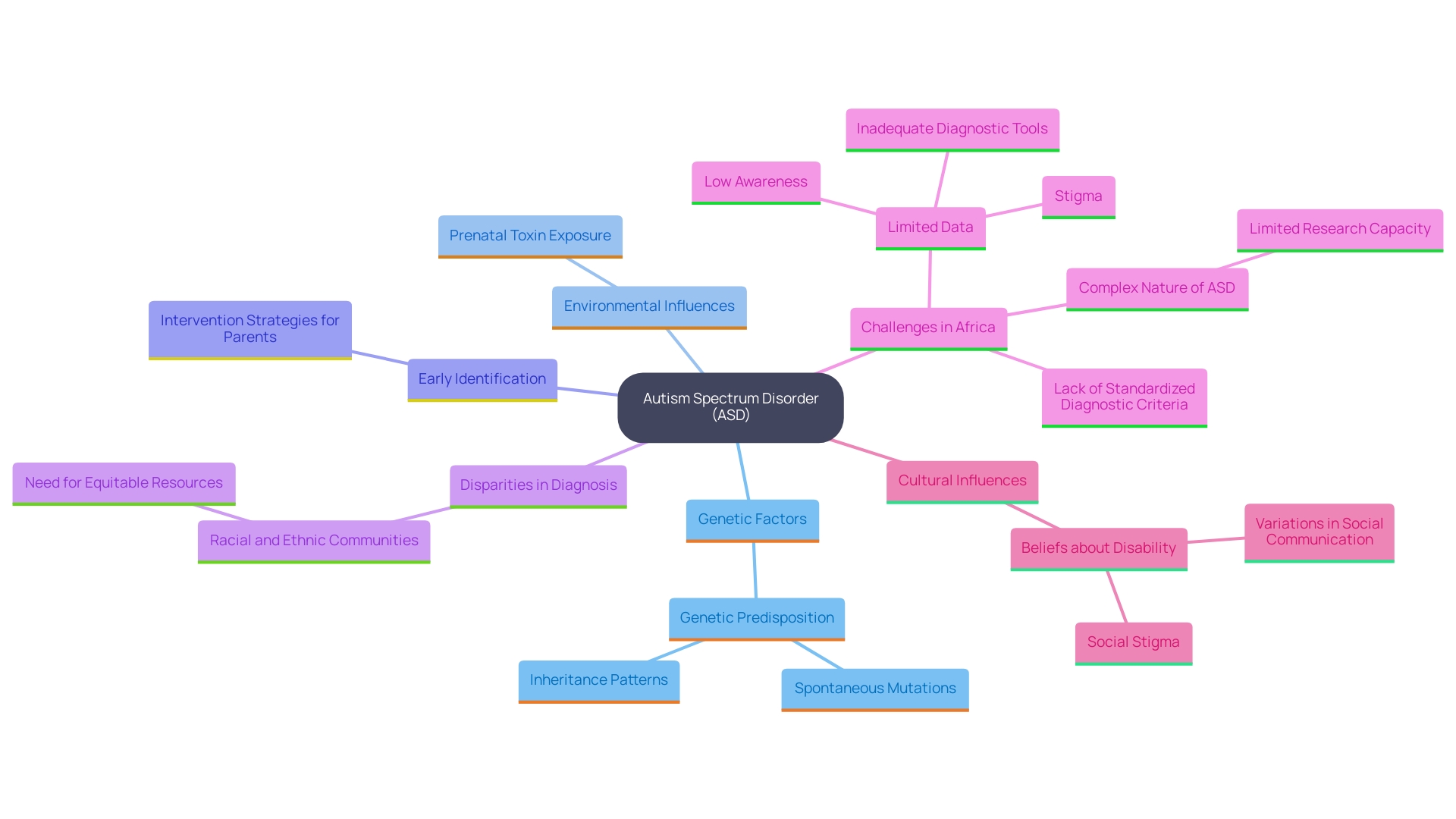
Support Needs and Treatment Options for Individuals with Autism
Individuals with autism often require various support services tailored to their specific needs. Treatment options may include:
- Applied Behavior Analysis (ABA) therapy
- Speech therapy
- Occupational therapy
- Among others
Each individual is unique, and developing a personalized intervention plan can assist in addressing their specific challenges and fostering growth. Parents are encouraged to collaborate with professionals to develop effective strategies that support their child's development and well-being.
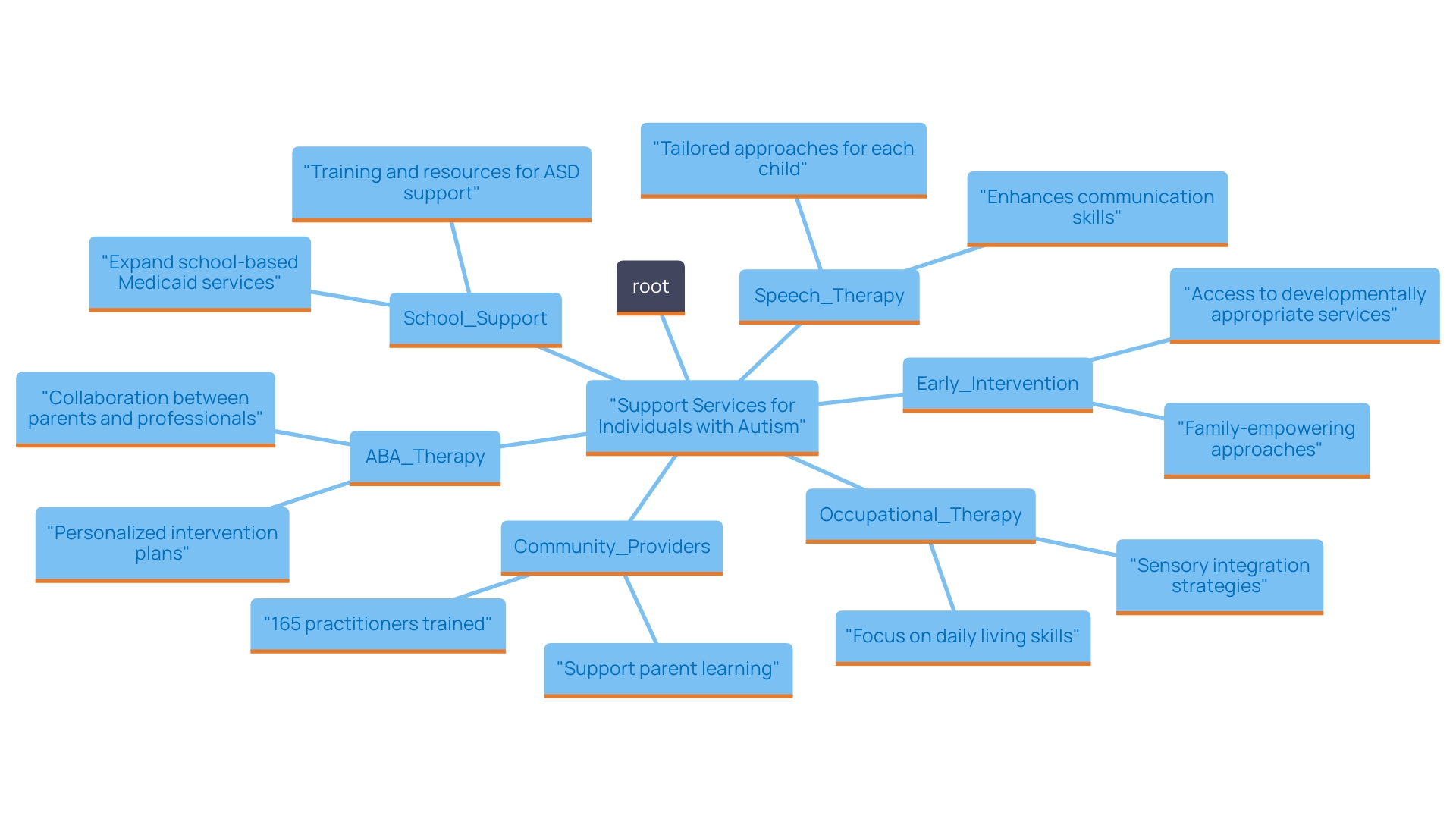
Conclusion
Understanding Autism Spectrum Disorder (ASD) is vital for creating supportive environments that allow individuals to flourish. This article has highlighted the complexities of ASD, from the diverse communication challenges to the behavioral traits and sensory sensitivities that characterize the condition. Recognizing that each person on the spectrum is unique empowers parents and advocates to approach their needs with tailored strategies that foster growth and confidence.
Early diagnosis and intervention stand out as critical components in supporting individuals with ASD. By understanding the genetic and environmental risk factors associated with autism, parents can advocate for timely screenings and appropriate resources. The importance of collaboration with professionals to develop personalized treatment plans cannot be overstated; it is through these partnerships that children can receive the comprehensive support they deserve.
Ultimately, the journey of navigating autism can be daunting, but awareness and knowledge are powerful tools. By embracing the nuances of ASD, parents can create nurturing spaces and advocate effectively for their children's needs, ensuring they have the opportunity to thrive in a world that is increasingly understanding and accommodating of neurodiversity.




